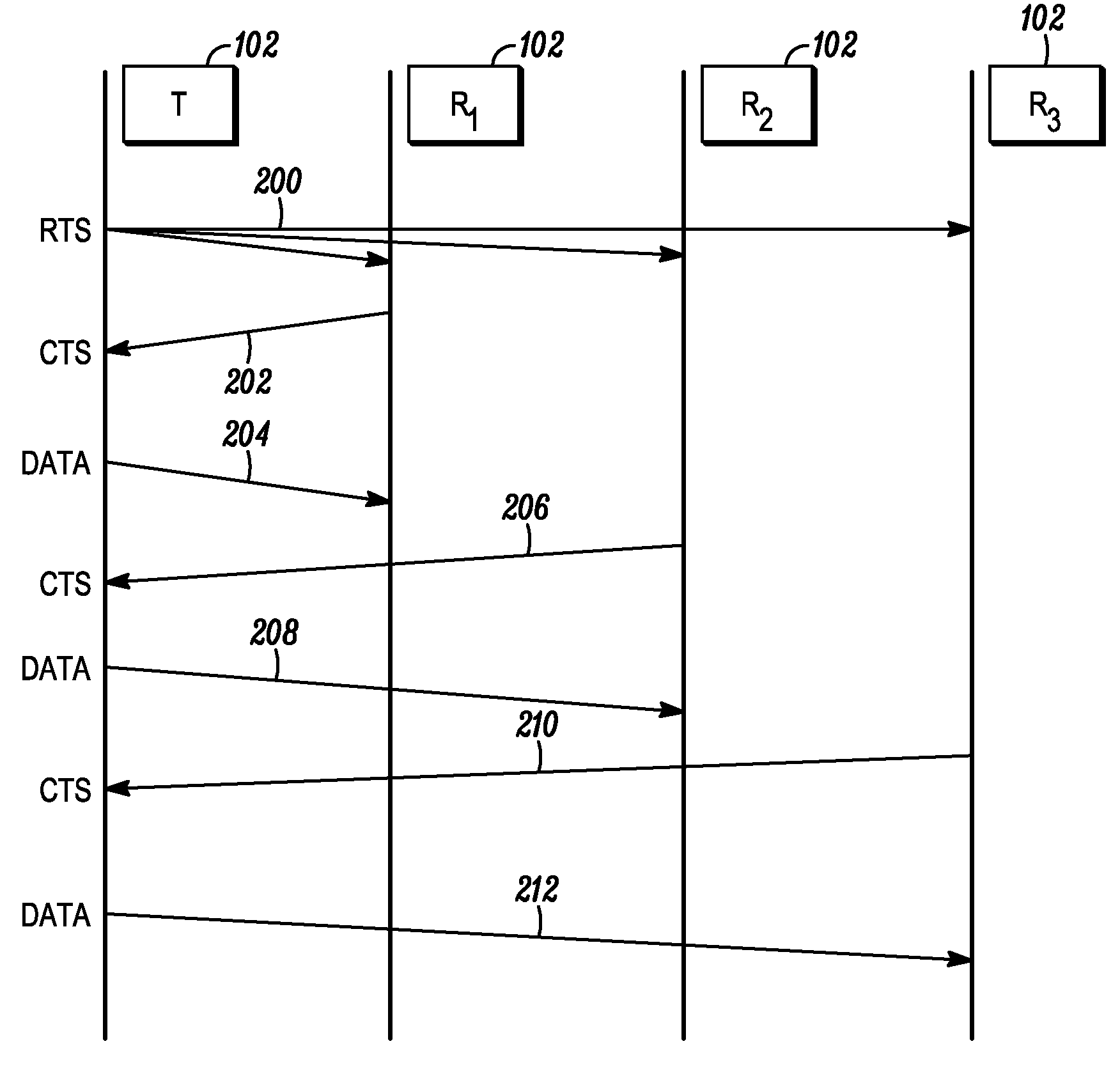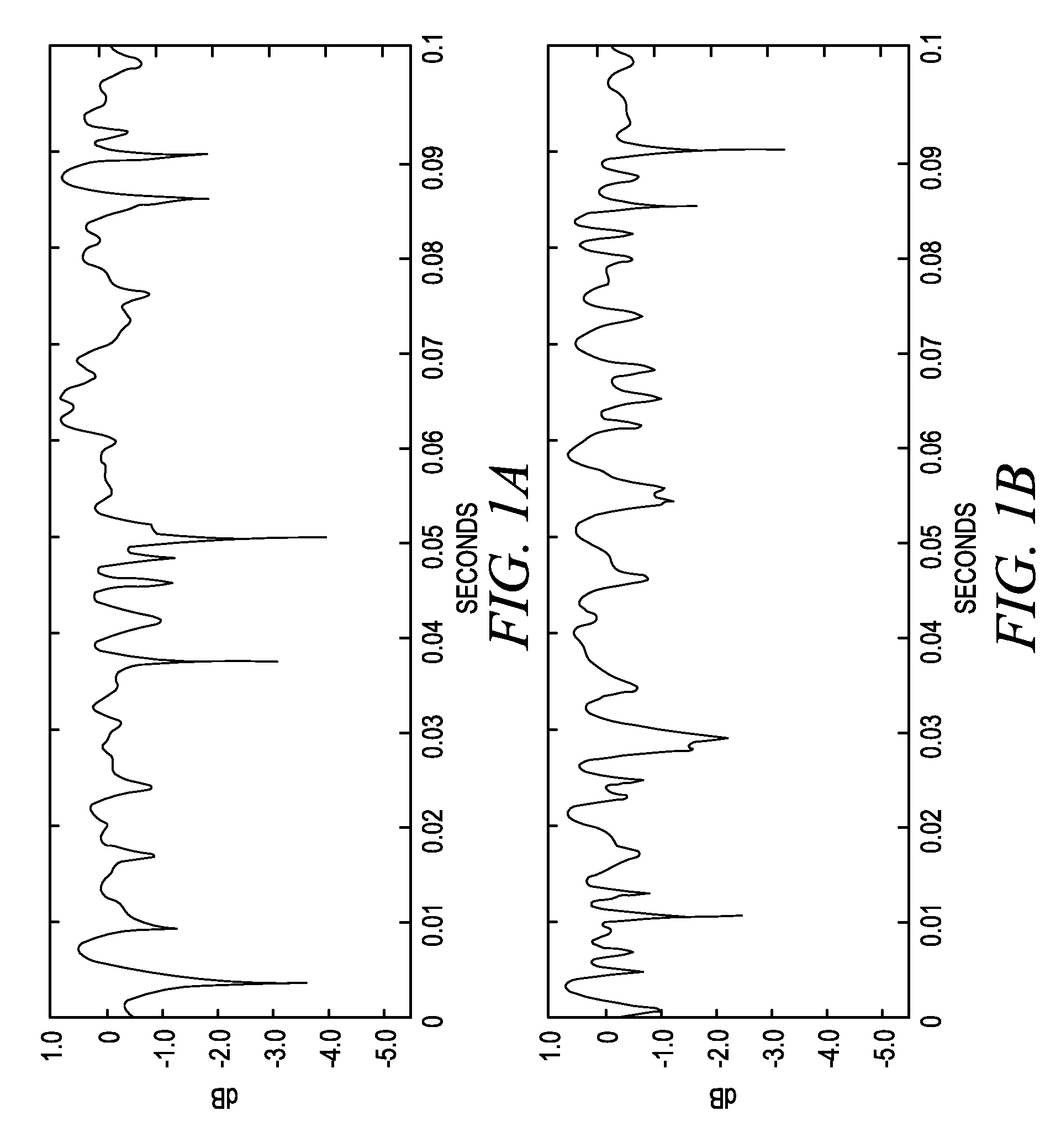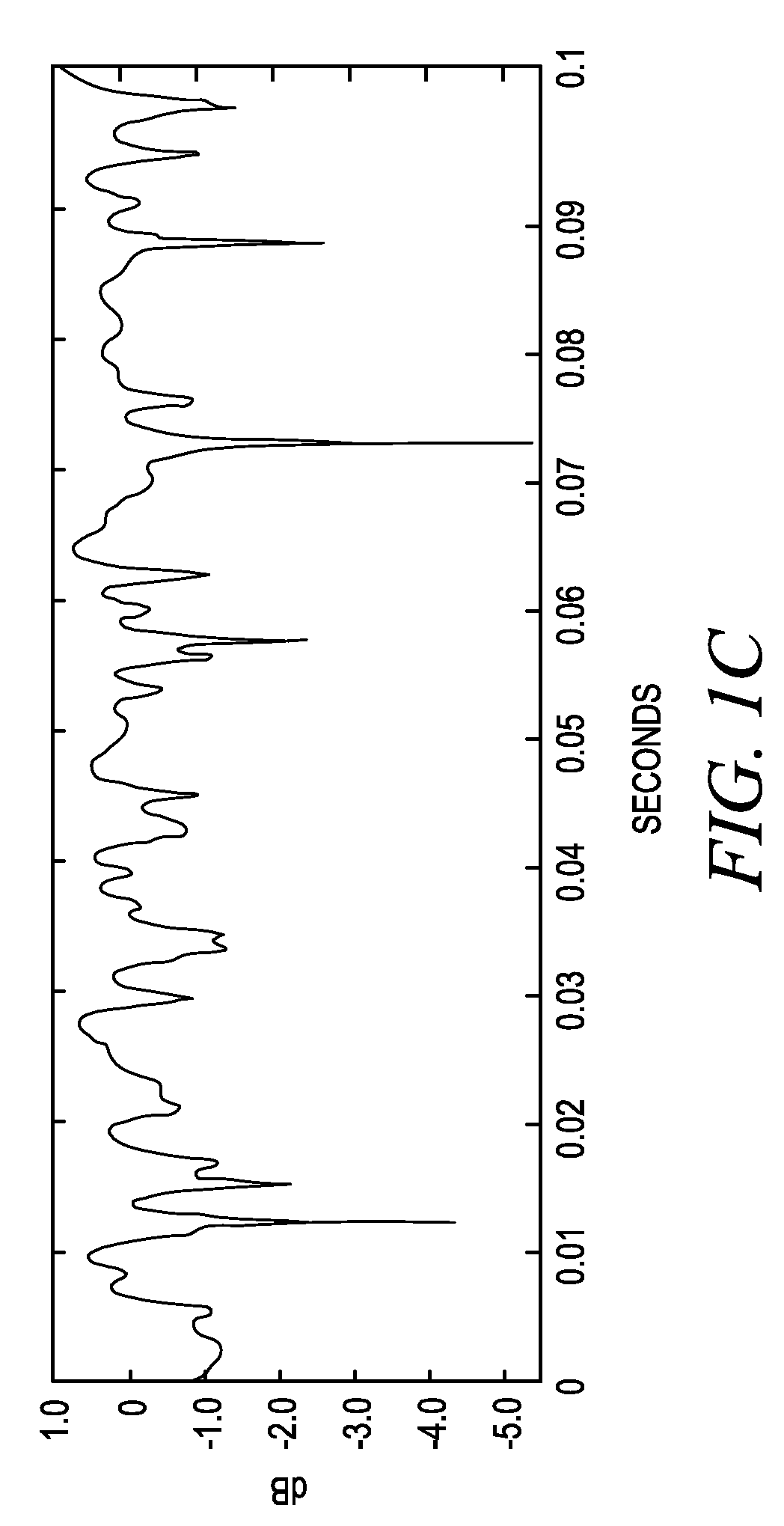System and method for performing macro-diversity selection and distribution of routes for routing data packets in Ad-Hoc networks
a routing data and network technology, applied in the field of system and method for performing macrodiversity selection and distribution of routing data packet routes in ad-hoc networks, can solve the problems of signal fading, increased number of lost or dropped calls during handoff process, etc., and achieves minimal overhead and packet loss, and reduces the effect of signal fading
- Summary
- Abstract
- Description
- Claims
- Application Information
AI Technical Summary
Benefits of technology
Problems solved by technology
Method used
Image
Examples
Embodiment Construction
[0035]FIG. 4 is a block diagram illustrating an example of an ad-hoc packet-switched wireless communications network 100 employing an embodiment of the present invention. Specifically, the network 100 includes a plurality of mobile wireless mobile terminals 102-1 through 102-n (referred to generally as mobile terminals 102), and a fixed network 104 having a plurality of access points 106-1, 106-2, . . . , 106-n, for providing the mobile terminals 102 with access to the fixed network 104. The fixed network 104 includes, for example, a core local access network (LAN), and a plurality of servers and gateway routers, to thus provide the mobile terminals 102 with access to other networks, such as the public switched telephone network (PSTN) and the Internet. The fixed network 104 can also include mobile nodes. The network 100 can further include fixed routers 107-1 through 107-n for routing data packets between the mobile terminals 102, the access points 106, and each other. The mobile t...
PUM
 Login to View More
Login to View More Abstract
Description
Claims
Application Information
 Login to View More
Login to View More - R&D
- Intellectual Property
- Life Sciences
- Materials
- Tech Scout
- Unparalleled Data Quality
- Higher Quality Content
- 60% Fewer Hallucinations
Browse by: Latest US Patents, China's latest patents, Technical Efficacy Thesaurus, Application Domain, Technology Topic, Popular Technical Reports.
© 2025 PatSnap. All rights reserved.Legal|Privacy policy|Modern Slavery Act Transparency Statement|Sitemap|About US| Contact US: help@patsnap.com



